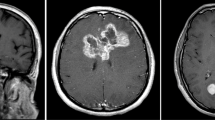Abstract
Presented paper shows a new approach to creating a fuzzy system based on an exclusive use of clustering algorithms, which determine the value of necessary parameters. The applied multisegment fuzzy system functions as a classifier. Each segment makes an independent fuzzy system with a defined knowledge base and uses singleton fuzzification, as well as fuzzy inference with product operation as the Cartesian product and well-matched membership functions. Defuzzification method is not used. Only the rule-firing level must be analysed and its value suffices to determine the class. The use of clustering algorithms has allowed a qualification of the number of rules in the base of fuzzy rules for each independent segment, as well as a specification of the centers of fuzzy sets used in the given rules. The calculated parameters have proved precise, so that no additional methods have been applied to correct their values. This procedure greatly simplifies the creation of a fuzzy system. The constructed fuzzy system has been tested on medical data that come from the Internet. In the future, those systems may help doctors with their everyday work.
Preview
Unable to display preview. Download preview PDF.
Similar content being viewed by others
References
Bennett, K.P., Mangasarian, O.L.: Robust linear programming discrimination of two linearly inseparable sets. In: Optimization Methods and Software, vol. 1, pp. 23–34. Gordon & Breach Science Publishers (1992)
Bishop, C.M.: Neural Networks for Pattern Recognition. Oxford University Press, Oxford (1995)
Bezdek, J.C.: Pattern Recognition with Fuzzy Objective Function Algorithms. Plenum Press, New York (1981)
Jang, R.J.S., Sun, C.T., Mizutani, E.: Neuro-Fuzzy and Soft Computing. A Computational Approach to Learning and Machine Intelligence. Prentice Hall, Upper Saddle River (1997)
Kuncheva, L.I.: Fuzzy Classifier Design. A Springer-Verlag Company, Heidelberg (2000)
Mangasarian, O.L., Wolberg, W.H.: Cancer diagnosis via linear programming. SIAM News 23(5), 1–18 (1990)
Mertez, C.J., Murphy, P.M.: UCI repository of machine learning databases, http://www.ics.uci.edu/pub/machine-learning-databases
Nauck, D., Klawonn, F., Kruse, R.: Foundations of Neuro-Fuzzy Systems. John Wiley & Sons, Chichester (1997)
Pedrycz, W.: Fuzzy Control and Fuzzy Systems. Research Studies Press, London (1989)
Rutkowska, D., Starczewski, A.: Fuzzy inference neural networks and their applications to medical diagnosis. In: Szczepaniak, P.S., Lisboa, P.J.G., Kacprzyk, J. (eds.) Fuzzy Systems in Medicine, pp. 503–518. Physica-Verlag, A Springer Verlag Company, Heidelberg (2000)
Rutkowska, D.: Neuro-Fuzzy Architectures and Hybrid Learning. Physica-Verlag, A Springer Verlag Company, Heidelberg (2002)
Starczewski, A., Rutkowska, D.: New hierarchical structure of neuro-fuzzy systems. In: Proc. 5th Conference on Neural Networks and Soft Computing, Zakopane, Poland, pp. 383–388 (2000)
Author information
Authors and Affiliations
Editor information
Rights and permissions
Copyright information
© 2008 Springer-Verlag Berlin Heidelberg
About this paper
Cite this paper
Starczewski, A. (2008). A New Approach to Creating Multisegment Fuzzy Systems. In: Rutkowski, L., Tadeusiewicz, R., Zadeh, L.A., Zurada, J.M. (eds) Artificial Intelligence and Soft Computing – ICAISC 2008. ICAISC 2008. Lecture Notes in Computer Science(), vol 5097. Springer, Berlin, Heidelberg. https://doi.org/10.1007/978-3-540-69731-2_32
Download citation
DOI: https://doi.org/10.1007/978-3-540-69731-2_32
Publisher Name: Springer, Berlin, Heidelberg
Print ISBN: 978-3-540-69572-1
Online ISBN: 978-3-540-69731-2
eBook Packages: Computer ScienceComputer Science (R0)




